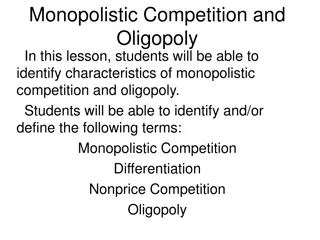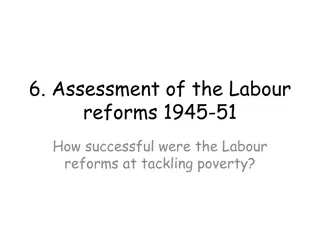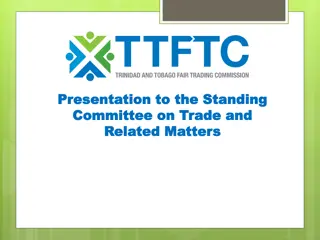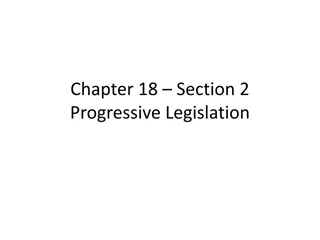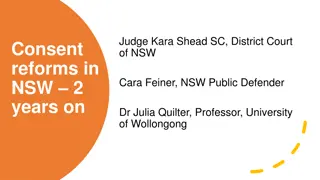
Competition Policy Reforms in Australia - Key Components and Lessons
Explore the evolution of Australia's competition policy reforms from the 1970s to the National Competition Policy in 1995. Learn about the origins, historical background, and key components of the reforms, aimed at enhancing market competition and efficiency. Discover how these reforms have shaped Australia's economic landscape and potential lessons for other countries like India.
Download Presentation

Please find below an Image/Link to download the presentation.
The content on the website is provided AS IS for your information and personal use only. It may not be sold, licensed, or shared on other websites without obtaining consent from the author. If you encounter any issues during the download, it is possible that the publisher has removed the file from their server.
You are allowed to download the files provided on this website for personal or commercial use, subject to the condition that they are used lawfully. All files are the property of their respective owners.
The content on the website is provided AS IS for your information and personal use only. It may not be sold, licensed, or shared on other websites without obtaining consent from the author.
E N D
Presentation Transcript
Competition policy reforms in Australia 18 February 2014 Matt Crooke, Minister-Counsellor (Economic) Australian High Commission, New Delhi
Overview National Competition Policy origins key components securing and maintaining support outcomes and lessons for India Australia s Root and branch review of competition
Background Federation with three levels of government Two types of government agencies at the Commonwealth level Government departments and independent agencies
History to NCP 70s and 80s Trade Practices Act introduced in 1974 Australian economy was heavily regulated: Fixed exchange rate/regulated financial sector Trade barriers/tariff protected industries Government ownership of utilities Substantial price, product and wage regulation In the early 1980s, large scale reforms removed many of these restrictions Created pressure on many industries to adapt
History to NCP 90s By the early 1990s, Australia recognised a need for further microeconomic reform. Australia s international competitiveness was lagging, and many sectors were highly inefficient; this was patently due to weak market forces at home. In 1992, an independent inquiry into the matter was launched known as the Hilmer Inquiry.
History to NCP 90s cont. The Hilmer Report recommended sweeping changes to Australia s competition framework. Acting on the Report, Australia s Federal and state governments agreed to the National Competition Policy Reform package in 1995. The overarching vision was to create national markets. This has further evolved into a guiding vision of creating a seamless national economy .
National Competition Policy Agreed by all levels of government in 1995 Reforms include: Review of legislation that restricts competition Universal application of pro-competitive legislation, particularly the TPA Reforms of public monopolies (transport, electricity, gas and water) Implementation of competitive neutrality to government businesses Third party access to significant infrastructure
Legislation review Guiding Principle: Legislation should not restrict competition unless it can be demonstrated that: the benefits of the restriction to the community as a whole outweigh the costs; and the objectives of the legislation can only be achieved by restricting competition.
Reforms to public monopolies Key principles for restructuring public monopolies include: Separation of regulatory and commercial functions; Separation of natural monopoly and potentially competitive activities; and Separation of potentially competitive activities into a number of smaller, independent business units In addition, assets were privatised where government ownership was no longer justified.
Reforms to public monopolies competitive neutrality A distinguishing feature of Australia s reforms to public monopolies is the inclusion of competitive neutrality. The Hilmer Review recommended that all levels of government agree that government businesses should not enjoy any net competitive advantage by virtue of their public ownership.
Third-Party Access Regimes The point of Third-Party Access Regulation is to promote the economically efficient operation of, use of, and investment in infrastructure facilities with natural monopoly characteristics. This can help to promote effective competition in upstream and downstream markets. It is often economically inefficient to duplicate such infrastructure. Standard market power provisions were seen as insufficient to deal with natural monopolies.
Implementing the NCP National Competition Council undertook implementation assessments Competition payments were made to the States based on those assessments
Securing support National Competition Policy agreement was a significant achievement Initial support achieved by drawing on evidence of potential gains
Maintaining Support Challenges of misinformation and vested interests Seek to overcome by transparency and assistance on case-by-case basis. Broad nature of program Those who lose from one reform, gain from another Public interest Any reform is in the community s interest
Public interest test Environmental considerations Social welfare and equity considerations Occupational health and safety Economic and regional development Interests of consumers Competitiveness of Australian businesses Efficient allocation of resources
Outcomes of NCP 2005 Productivity Commission Review of National Competition Policy Significant net economic benefit of the reforms Lessons from NCP inform current and future competition and deregulation reform agenda. Principles from NCP manifest in current policies, including current productivity- enhancing reforms.
Competition Policy Review The Government s root and branch review of competition laws and policy will commence in early 2014. The review is intended to identify long-term improvements that can be made to the regulatory and policy framework to improve the productivity of the Australian economy.
Possible lessons Continue to build the case and be ready for opportunities well-devised microeconomic reform improves peoples lives for the better Independent, vibrant public institutions that support reform and are as sector-neutral as possible towards a vision of well-functioning national markets Allow forward-leaning jurisdictions to drive process and consider fiscal incentives in support of national reform outcomes
Competition policy reforms in Australia 18 February 2014 Matt Crooke, Minister-Counsellor (Economic) Australian High Commission, New Delhi



